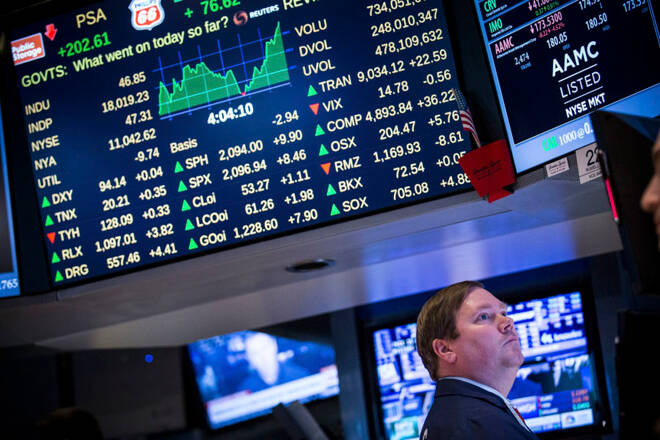Advertisement
Advertisement
Stock Market Weakness: Don’t Blame the Tariffs, Blame Rising Interest Rates
By:
In my opinion, expectations of rising interest rates are starting to make stocks a less-attractive investment. So the allocation process of moving money from stocks to Treasurys is just beginning and it’s likely to continue until investors have made the adjustments to their portfolios that bring them to a comfort level. Blaming the tariffs is just noise at this time.
Let the blame game begin. What’s causing today’s stock market weakness? Some say President Trump’s ratcheting up of trade tensions after imposing stiffer tariffs on China on Wednesday. While Trump may share some of the blame, there is plenty to spread around.
Let’s start with the disappointing earnings report from Facebook. The NASDAQ composite had just hit a new all-time high earlier in the session on July 25 before the social media giant released its sour earnings report after the closing bell. The tech-based index hasn’t made a new high since. Spillover selling into the S&P 500 Index also led investors to retreat after this benchmark hit its highest level since early February.
Dow Jones Industrial investors waited a few days before hitting it recent high on July 27. This was because of limited exposure to technology stocks.
How about blaming the robust U.S. second-quarter GDP report. It showed the U.S. economy grew 4.1% during the second quarter. While Trump celebrated the news, the Fed and several economists downplayed the number, saying it can’t be sustained the rest of the year. Perhaps stock investors believe that the U.S. economy peaked during the April to June time period.
Trump proposed the latest round of tariffs on July 10 when Dow futures were trading 24927, but July 27, they were trading 25572, up 645 points. In fact, S&P futures rose 52.75 during the same time period and the NASDAQ-100 rallied 7301.50 to 7530.00, or 228.50 points.
As of Friday, August 2, the only index trading below its July 10 close is the NASDAQ-100. Throughout the year, the index has outperformed the Dow and the S&P because as many have said, technology has been immune from the tariffs. So if you believe this then you can’t all of a sudden start blaming the tariffs on its decline.
Suggested Articles
- Fed Leaves Rates Unchanged as Expected, Makes no Mention of Tariff Battle
- Fears of Higher US Rates and Trade War Renewed Pressure on EM, Turkish Lira Fell to New Historical Low
- Is There A Silver Lining for Argentina’s Economy?
One more factor that could have led to the recent tops and the current weakness is Fed policy. President Trump may be right in blaming the Fed for trying to slow down the economy. This isn’t that profound of a statement. Money managers will tell you that there is a trade-off between rising interest rates and rising stock prices.
There comes a time in the natural asset allocation cycle when investors just decide they don’t like the risk and they choose to move money out of risky assets to take advantage of relatively high, government-guaranteed yields.
We could be seeing that today especially since the Fed made its announcement on Wednesday, which indicated it was preparing to raise rates at least two more times this year. Furthermore, 10-year Treasury yields pierced the psychological 3 percent level yesterday. This was the third time up there this year and I think a lot of stock investors were not going to miss it this time.
Additionally, if you go way back to late January and early February when the Dow and S&P made their highs for the year, leading to a steep and volatile sell-off, you’ll see there was no talk of tariffs. But most of the news blamed the possibility of at least four rate hikes for the rapid retreat in the stock market.
In my opinion, expectations of rising interest rates are starting to make stocks a less-attractive investment. So the allocation process of moving money from stocks to Treasurys is just beginning and it’s likely to continue until investors have made the adjustments to their portfolios that bring them to a comfort level. Blaming the tariffs is just noise at this time.
About the Author
James Hyerczykauthor
James is a Florida-based technical analyst, market researcher, educator and trader with 35+ years of experience. He is an expert in the area of patterns, price and time analysis as it applies to futures, Forex, and stocks.
Did you find this article useful?
Latest news and analysis
Advertisement
